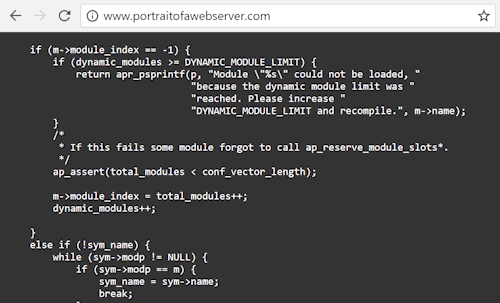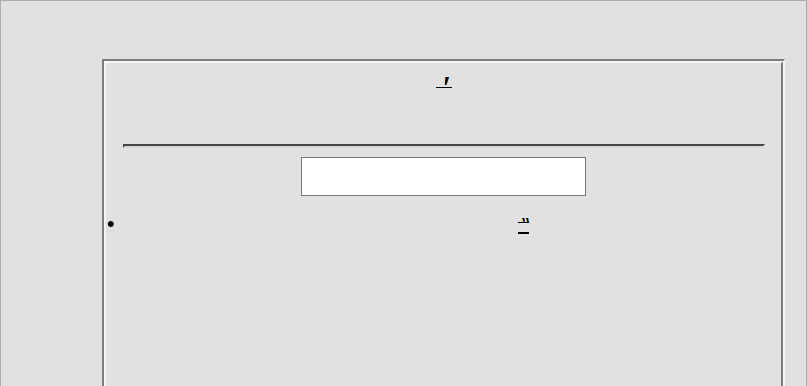
Registering g.net or a.com hasn't been possible since 1993, when the Internet Assigned Numbers Authority banned new registrations of single-letter domains. So how did the art duo JODI get their 2016 project to live on domains like ᠐.com?
The answer is that JODI, long exploiters of contradictions and loopholes in the mechanics of the web, picked symbols from beyond the Latin script, registering these domains using Punycode.
Punycode is an ASCII transcoding of Unicode meant to represent Internationalized Domain Names (IDNs). It allows domains to include international characters, but not in a way that could be misleading, such as creating "microsoft.com" with the lower-case o from another alphabet; those special symbols are expanded into a sequence beginning with xn--.
The ᠐ in ᠐.com is not a zero in Roman characters, but the Mongolian Numeral Zero, Unicode character 6160; depending on the font used, it can be visually identical to 0. Since the ASCII representation (in this case, xn--m6e.com) is what actually gets registered, JODI were able to work around the single-letter restriction.
Load the site at ᠐.com and its contents are simply the Apache system defaults: in 2016 it returned "Apache is functioning normally." In 2020, it presents just an empty directory that can be navigated into and out of, giving it the feel of pre-web gopher sites, or the very early web, when exposed, navigable directories were common.
Other sites in the IDN series forward the user through a sequence of subdomains, appending their own hostname to a growing list, in a pattern reminiscent of typewriter poetry; see the top image, from ꀍ.com. However, "growing list" is a bit misleading. The output is not actually carried from one domain to the next—posted or passed along in cookies—but simply hardcoded. If you jump to one of the sites in the middle of the list, it will output of the previous sites are already there. It is a movie, with each frame on a different website, and we're forwarded from one to the next.
In this way, it's a kind of cousin to Olia Lialina's Summer animation (discussed in the Stack Trace Art post, about another project that exploits Unicode weirdness), which was similarly distributed. But where Lialina's Summer piece focused on the collaborative nature of its distribution across artist websites, JODI's emphasizes the raw mechanics of the web, dumbly transmitting text back and forth. It very consciously eschews complexity or web styling; apart from the availability of Unicode-friendly fonts, nothing in IDN would work differently on a browser from the early web.

Alexander Galloway, in his e-flux piece on IDN, emphasizes IDN as a form of digital modernism:
They are moderns through and through. There is no Jodi work that is not oriented toward the digital as its object and material. There is no Jodi work that is not on and about the material. They display in abundance that great modernist virtue of self-referentiality. The material of their work is quite simply the material itself.
Their materialism is the web as a mass of language and code, where the two are inextricably linked. Messages meant for people and browsers are smushed together: an Apache message slips through at the top of the project page, along with an exposed SERVER directive. Viewing its source reveals a block of seemingly random emoji hidden in a comment block. As Galloway explains, "the texture of code and computation takes over, and computing itself—its strange logic, its grammar and structure, and often its shape and color—produces the aesthetic."
Its approach is reminiscent of Web-modernism previously covered on estoeric.codes: Evan Roth's All HTML (2011), which presents every HTML tag in alphabetic order, and Jan Robert Leegte's Portrait of a Web Server (2013), which continually serves its own code. But JODI's embrace of Unicode's technical encodings is more reminiscent of the alientating machinic logic of Webdriver Torso or c0d3.attorney, a space that you can't quite be sure is meant for human or algorithmic consumption.
Some domains in IDN offer other discoveries beyond this. ꇎ.net has a set of empty files with various extensions. You can see how a zero-byte pdf displays in your browser, an empty png, or even wml, the format for VRML, the original 3d mark-up language (see if you have anything installed that can open it).
IDN was recently acquired by SFMoma, and it is thrilling to see this work receive institutional recognition, especially so soon after their My%Desktop appeared at New York's MoMA. With the increased visibility these institutions bring, perhaps more will take up the mantle of breaking the web in interesting ways.





